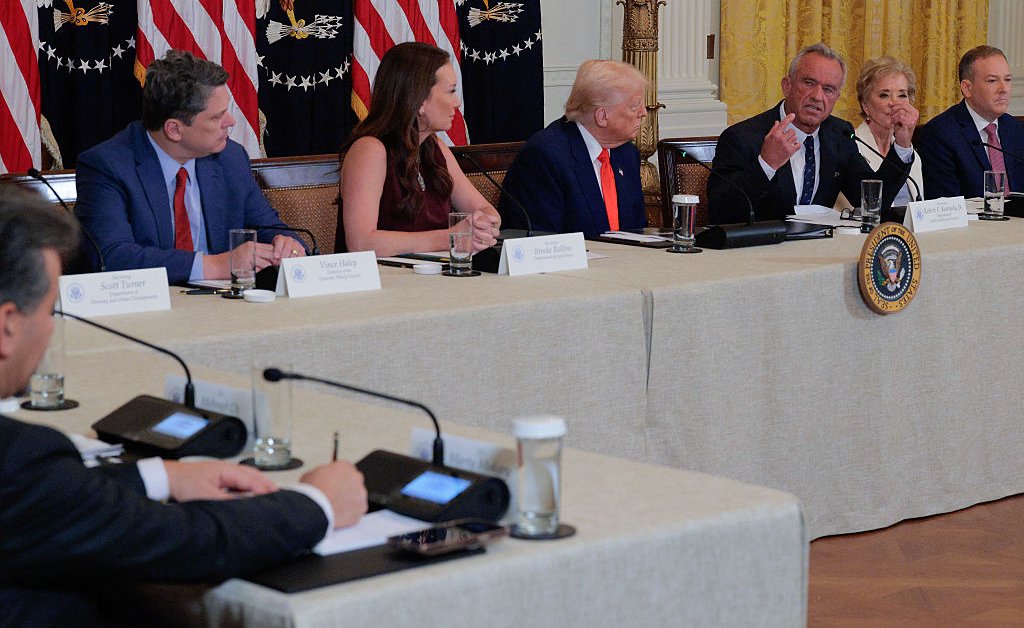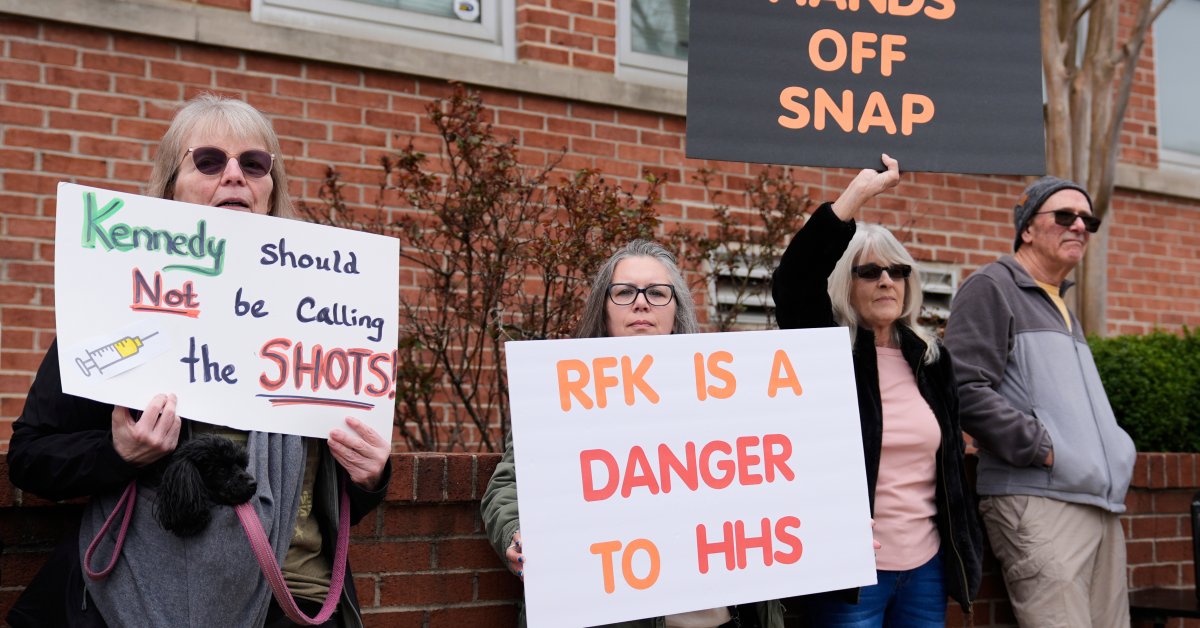The first MAHA report, released in May and titled “Make Our Children Healthy Again,” mentioned ultra-processed foods more than 40 times, blaming them for negative health outcomes in children.
The just-released follow-up action plan, which outlines the Trump Administration’s strategy for fixing the problems identified by the first report, mentions ultra-processed foods only once, pledging that government agencies would continue to try to develop a definition for them.
It’s just one way that the MAHA Strategy Report, released on Sept. 9, disappointed many public health advocates—including some MAHA supporters—who had hoped that Robert F. Kennedy Jr.’s maverick approach to science might upend decades of slow progress on improving nutrition among American children.
“The first MAHA report was revolutionary in a good way,” says Jerold Mande, an adjunct professor of nutrition at the Harvard T.H. Chan School of Public Health who was a senior policy official for nutrition in the Bush, Clinton, and Obama administrations. It suggested that the root cause of chronic disease in the U.S. was the food industry, a renegade position for the federal government to take. This action plan backed off significantly from that position.
“What this says to me is that the first report was written by MAHA,” he says, “and the second one, the White House let industry lobbyists write it.”
Read More: Why Ultra-Processed Foods Are So Bad for You
Trump Administration figures defended the action plan at a press conference on Sept. 9, praising the report and its 128 action points that it says will be achieved through innovative approaches to research, increased public awareness, private-sector collaboration, and realigned incentives.
“A lot of these 128 recommendations are things that I’ve been dreaming about my whole life,” said Robert F. Kennedy Jr., the Secretary of the Department of Health and Human Services, at the press conference. “There’s never been an effort like this.”
The MAHA Commission—made up of Kennedy and more than a dozen other administration officials, including the USDA secretary and the EPA administrator—met with hundreds of stakeholders, including doctors, teachers, parents, and farmers, Kennedy said, outlining the many complex interests that the Administration had to balance in coming up with the report.
But observers still contend that MAHA’s strategy lacks teeth. For example, the first report said that pesticides, microplastics, and dioxins are found “at alarming levels” in the blood and urine of American children. It mentioned that some studies have drawn links between pesticides and adverse health outcomes, and that glyphosate may lead to cancer and liver inflammation.
The September report, though, only says that the EPA will ensure that the public has “awareness and confidence in EPA’s robust pesticide review procedures” and that USDA and EPA will launch a partnership with the private sector to use precision technology for pesticides. It does not mention any pesticides by name.
Read More: Are Pesticides in Your Food Harmful?
When a draft of the MAHA strategy report was leaked in mid-August, Moms Across America, a nonprofit that promotes awareness about toxins in the food supply, expressed disappointment. “This MAHA Commission Report’s section on pesticides was clearly influenced by chemical corporations,” the group said in a post on its website. “It is not a depiction of Robert F Kennedy’s commitment; it is a display of many people whose names are on the report, pandering to pesticide company profits and catering to the convenience of agrochemical farmers.”
Some of the group’s concerns include that the EPA’s pesticide review process does not require long-term animal studies or studies that show multigenerational effects of pesticides. The group has called on the Trump Administration to ban 86 pesticides that have been banned in other countries.
When a reporter asked at the press conference why the report was not more critical about pesticides, as some people had expected, the administration defended its position, saying that the government already had a strong pesticide-review process in place.
“The EPA is arguably the most rigorous, most data backed, the most scientifically backed deep review process in the world,” USDA secretary Brooke Rollins said. “To approve any product that is used by our farmers, it will have gone through years upon years upon years of research.”
EPA Administrator Lee Zeldin added that the EPA was “aggressively confronting” the threat of banned pesticides that had been imported or smuggled into the U.S.
Another criticism of the leaked report came from Marion Nestle, a renowned nutritionist and professor of food studies at New York University. She lambasted the report for having too few actual plans to change the system, and too many calls for more research.
“When it comes to policy, it has one strong, overall message: more research needed. Regulate? Not a chance,” Nestle wrote, on her website. “Everything else is waffle words: explore, coordinate, partner, prioritize, develop, or work toward.”
The final strategy plan says it will address the chronic disease crisis “through advancing research,” that it will launch a new vaccine injury research program, that it will “conduct research as appropriate” on prescription patterns for mental health drugs, and will “expand research on dietary patterns,” to name a few.
There are, of course, some groups that will be happy with the MAHA strategy report, including those in the food industry who were spared the regulation that the initial report seemed to hint was coming. The strategy report largely eschews industry regulation and instead calls for industry guidelines, which are often determined and developed by companies, not by the government.
Rather than regulating the direct marking of food to children, for example, the strategy report says it will explore the development of potential industry guidelines.
That approach to industry is not so different from what Michelle Obama did in her Let’s Move campaign, says Mande, of Harvard, who served in the USDA at the time. Obama’s government-wide effort to combat childhood obesity highlighted companies that were making their own efforts to meet the goals she had set in Let’s Move. Though she would name specific companies and hold events with them to celebrate their commitments, a lot of those commitments have fallen by the wayside, he says.
Read More: Seed Oils Don’t Deserve Their Bad Reputation
At the press conference, Rollins highlighted companies that had voluntarily agreed to remove petroleum food dyes from their food products, calling them out by name.
Some food industry groups also seemed to be pleased with the report, especially those in the dairy industry.
They include the National Milk Producers Federation (NMPF), which celebrated a line from the strategy report that suggests that the Trump Administration will push to get whole milk back into schools. For decades, scientific evidence has suggested that because whole milk contains high levels of saturated fat, consumers should favor lower-fat versions. The MAHA report, on the other hand, says it wants to remove restrictions on whole-milk sales in schools.
“The MAHA Commission’s Make Our Children Healthy Again Strategy recognizes what the latest science indicates and what we’ve long been saying: that getting whole milk back into schools and boosting dairy in diets helps meet America’s nutritional needs,” said NMPF president and CEO Gregg Doud on the group’s website, “and that it is critical to improving the health of our nation’s children.”
—With reporting by Connor Greene








